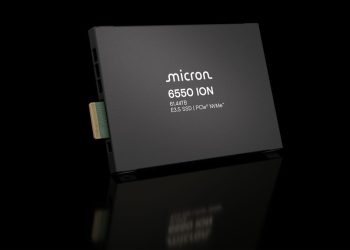sm:leading-[6px] sm:text-sm”>
You may like
-
Chinese chipmaker unveils Optane-like storage class memory
-
Micron shows off world’s fastest PCIe 6.0 SSD, hitting 27 GB/s speeds — Astera Labs PCIe 6.0 switch enables impressive sequential reads
On the other hand, flash memory like what’s used in SSDs and USB drives is non-volatile, so it retains data even without power. The downside is that it’s much slower, usually taking microseconds to milliseconds. This speed limitation makes flash memory unsuitable for modern AI (Artificial Intelligence) systems, which often need to move and update large amounts of data almost instantly during real-time processing.
Since PoX is a non-volatile type of memory, it can retain data without requiring power when idle. Its combination of extremely low energy consumption and ultra-fast picosecond-level write speeds could help eliminate the long-standing memory bottleneck in AI hardware, where the bulk of energy use is now spent moving data rather than processing it.
Professor Zhou Peng and his team at Fudan University completely reconfigured the structure of Flash memory where instead of traditional silicon, they used two-dimensional Dirac graphene, known for its ability to let charges move rapidly and freely.
They further refined the design by adjusting the Gaussian length of the memory channel, which allowed them to create a phenomenon known as 2D super-injection. This results in an exceptionally fast and nearly-unlimited flow of charge into the memory’s storage layer, effectively sidestepping the speed limitations that conventional memory faces.
“By using AI algorithms to optimize process testing conditions, we have significantly advanced this innovation and paved the way for its future applications,” Zhou said in an interview with Xinhua.
To accelerate the real-world deployment of this technology, the research team is reportedly working closely with manufacturing partners throughout the R&D process. A tape-out verification has already been completed, yielding promising early results.
Liu Chunsen, a researcher at the State Key Laboratory of Integrated Chips and Systems at Fudan University said, “We have now been able to make a small-scale, fully functional chip. The next step involves integrating it into existing smartphones and computers. This way, when deploying local models on our phones and computers, we will no longer encounter the bottleneck issues such as lagging and heating caused by existing storage technology.”
Follow Tom’s Hardware on Google News to get our up-to-date news, analysis and reviews in your feeds. Make sure to click the Follow button.









